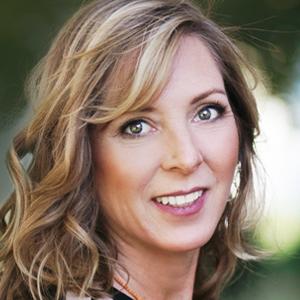Doubling Down on Impact: Leveraging All That I Have for the World I Want to See
by Kristin Hull, PhD Founder and CEO, Nia Impact Advisors
Doubling Down on Impact: Leveraging all that I have for the World I want to see
As an impact investor, a financial change agent and entrepreneur, my money story centers around aligning assets with values. At Nia Impact Advisors, we move investment dollars into the companies that matter—those working to create the world in which we want to live. I come by this work having grown up immersed in the belly of our financial markets.
As a child, money was tight; often a stressful topic at our house. Money messages included being prudent, entrepreneurial and thrifty. I wore hand-me-down clothes, planted seeds in our victory garden and overheard as my parents argued over whose turn it was to pick up the food stamps. My father taught math at a local high school and then took to the streets as a Fuller Brush salesman in the evenings. To bring in additional income, my mom corrected high school English papers and my father managed apartments to reduce our rent. I learned about the importance of saving money, of looking for opportunities, and of working hard.
Math was a big part of my upbringing. I dealt practice hands to my father who used his quant skills to count cards on a team in Nevada, and later started a trading company in our family’s garage. The mantra heard at the dinner table and in the back seat of the station wagon was to “buy low and sell high” as often as you possibly can.
In an effort to connect with my Dad, I spent a lot of time in the garage, and some years later on the floor of the commodities exchange in Chicago where he eventually wound up—and where I learned about algorithms, puts, calls, futures, and the price of soy and pork bellies.
In 2007, my vastly different worlds of education and finance intersected and my career came full circle. We had sold the trading firm and, for the first time, had more money than we needed. The story changed from prudent saving to going big, to leveraging resources to create a tangible difference. We decided to start a family foundation and suddenly I found myself in a position to influence and direct discretionary dollars. Having spent much of my professional life in underfunded urban schools, I had sat on the grant writing side of the table. Yet, the closest I had ever come to philanthropy was purchasing girl scout cookies.
Seeking knowledge, I attended my first philanthropy conference, the Global Philanthropy Forum. There I expected to learn strategic and efficient ways of giving, how to best address root causes of injustices and leverage grant making dollars to effect change and contribute toward social justice. Instead, I remember a session titled “2%: More for Mission.” I had no idea what that was, so I walked in and sat down in the back. There were several large U.S. foundation representatives up on the stage. The discussion was lively and somewhat contentious as they argued about foundation endowments. Something I had not yet begun to think about.
The proponents of More for Mission were encouraging foundations to invest two percent of their endowments in alignment with their stated missions. Until that day, I had never considered the endowment as part of my philanthropic tool box. With this brand new information, I immediately saw just how important this approach to investing could be. The possibility of having our endowment fuel, rather than detract from our grant making goals lit me up. I stood in the back of the crowded room with my hand in the air, wanting to ask the question “Why just two percent?” and “Why not 100 percent?” No one called on me that day, and yet the spark had been kindled. I left the session energized and on a mission to align 100 percent of our foundation assets with our mission of environmental sustainability and social justice.
That year, we identified seven community banks, all doing excellent work providing local loans and expanding financial literacy within their communities. We moved our endowment into these cash investments and were quickly 100 percent invested with our values. Not only did I decide to go all in, investing into what I wanted to grow, there was a financial upside. In 2008, U.S. foundation endowments were down on average 28 percent, yet, having made several fixed income investments by then, our foundation endowment was up two percent. For me, 2008 was a good year. These returns confirmed for me that aligning investments with our values, investing into companies we want to exist made financial sense. Growing the field of impact investing became my mission.
Read the rest of Kristin's impactful story here- http://greenmoneyjournal.com/doubling-down-on-impact-leveraging-all-that-i-have-for-the-world-i-want-to-see/
========




